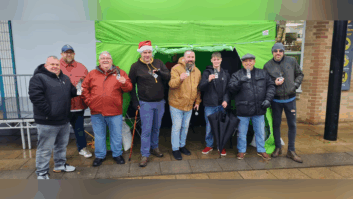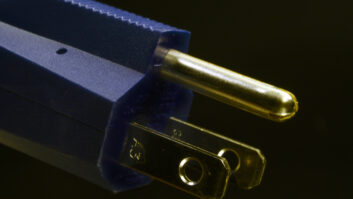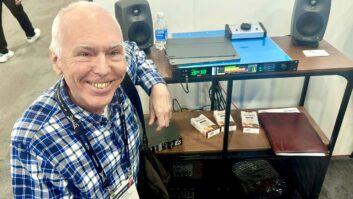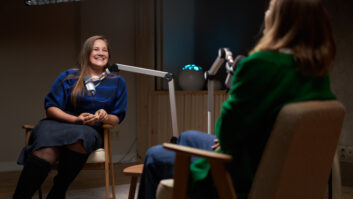Bill Fike writes in to say that quite often he will receive, with a new piece of equipment, a power or audio cable or some other special connection cable. More often than not, the cable has been folded and tightly tied with a cable tie. Even after removing the tie, some of these cables will remain kinked indefinitely.
Bill has read that a heat gun can be used to warm up the cable and remove the kinks; but that’s a lot of work to go over the length of a long cable. Bill also worried about the risk of melting the inner conductors; some heat guns can get very hot.
Bill came up with an easy alternative method to relax the cable so it can be coiled or wrapped. His clothes dryer has a rack for drying sweaters, sneakers or other items that can’t be tumbled. He places the cables on the rack in the dryer, sets the dryer to high and runs it for about 10 minutes (Fig. 1). Some cables may need longer dryer time.
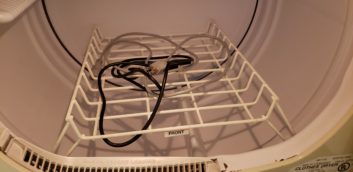
When you pull out the cable, it’s warm and relaxed. It can then be coiled or wrapped properly, and it won’t have kinks.
The first time Bill did this, his wife asked why the drying rack was out. When she heard the answer, she just slowly shook her head and walked away. Some people don’t appreciate a good idea when they see one.
By the way, Bill is an Audible Approved Producer. Audible defines this as “a master of the craft, the best of the best; they excel in audiobook production, performance, generate positive customer reviews, and provide the Author and Rights Holder with a professional and smooth production experience. They typically submit audiobooks that do not require a resubmission by QA, and their titles are not terminated for reasons related to the production or their professionalism. Audible Approved Producers are hand-selected by the ACX team for their skill.”
***
Engineering consultant Frank Hertel is always solving problems. Recently, he found an interesting link while searching for an older two-lead virtual ground IC.
The link takes you to a 2000 Engineering Application Note by Bruce Carter of Texas Instruments. Titled “A Single-Supply Op Amp Circuit Collection,” it is ideal for those engineers who still fabricate special devices, instead of buying something “off the shelf.”
This in-depth article provides useful information regarding the design and use of op-amps, especially in single voltage supply applications. The author explains that one of the biggest problems for designers arises when the circuit must be operated from a single voltage supply rather than a dual ±15 VDC supply. The application note includes working circuits that should be helpful.
The full article can be accessed at www.add.ece.ufl.edu/4924/docs/TI_SingleSupply.pdf
***
Speaking of op amps:
Dan Slentz writes that though he is far from the best bench tech, he has replaced his share of op amps over the years. At WHIZ in Zanesville, Ohio, the AM/FM studios were in a different building, and Dan had a static or ground issue where he was constantly replacing op amps.
Dan alleviated the problem by adding an odd diode to the input/output of the op amp. This didn’t affect the audio, but did discharge anything over 1V to ground. This greatly reduced the replacement of op amps in his distribution amps.
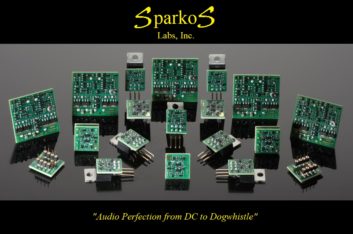
As Dan was researching the issue, he came across “discrete op amps” that sounded interesting. A video associated with the site describes these devices as being better sonically. The company is Sparkos Labs; they use layered surface-mount devices mated to the familiar eight-pin DIP (Dual In-line Package) to create an op-amp alternative. In addition to a full data sheet, there’s a white paper on why discrete op-amps are superior to ICs.
PS: Dan keeps an eye via social media and enjoys seeing what “cotton-headed ninny muggins” are up to. (If you don’t know that phrase, watch the movie “Elf.”)
Today’s award winner is a hobbyist who built an FM transmitter powered by the 12 VDC of a car. With that kind of power, there’s small chance of this individual’s transmitter causing an interference problem. But what caught Dan’s eye was his closing statement, seeking referrals for upgrading to a higher-power transmitter!
***
We’ll wrap up this column with a little history lesson that Dan found.
Prior to the advent of the tape cartridge machine was a device called the MacKenzie Program Repeater. As one of the first designs of continuous loop tape playback devices, the MacKenzie Program Repeater was used by top 40 radio stations starting in the late 1950s.
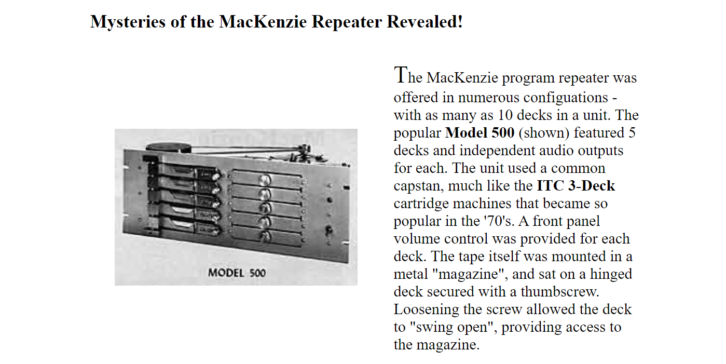
The MacKenzie Model 500 featured five decks stacked — though other models included up to 10 — all with a common capstan. Two independent tracks per magazine deck gave a total of 10 messages that could last up to 14 minutes. Tape was contained in mounted metal magazines.
Read about it at the ReelRadio website, which includes a drawing of how the tape was wound in the magazine. Visit www.reelradio.com/reports/mackenzi to read more.
Though the repeater found its way into top 40 radio, according to the article it was used initially at Disneyland and in Hollywood filmmaking. Louis G. MacKenzie, inventor of this device, received a technical citation for developing a selective sound effects repeater at the 1962 Academy Awards.
Contribute to Workbench. You’ll help your fellow engineers, and qualify for SBE recertification credit. Send Workbench tips to [email protected].
John Bisset has spent over 50 years in the broadcasting industry and is still learning. He handles western U.S. radio sales for the Telos Alliance. He holds CPBE certification with the Society of Broadcast Engineers and is a past recipient of the SBE’s Educator of the Year Award.
